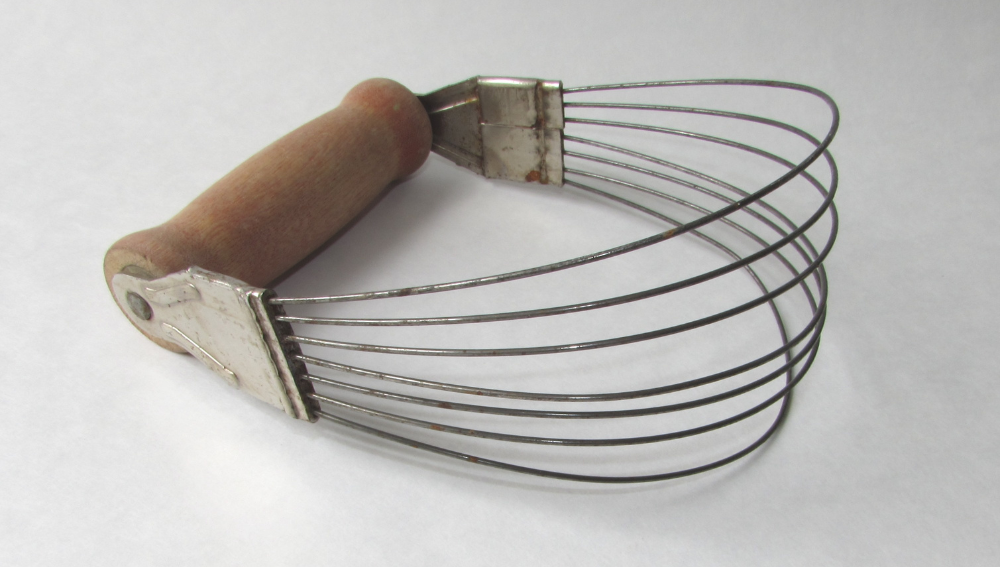As a lover of baked goods, I know that puff pastry is a versatile and delicious ingredient that can be used in a variety of dishes.
However, reheating puff pastry can be a bit tricky, as it can quickly become soggy or lose its flakiness. In this article, I will share with you my tips and tricks on how to reheat puff pastry so that it retains its texture and flavor.
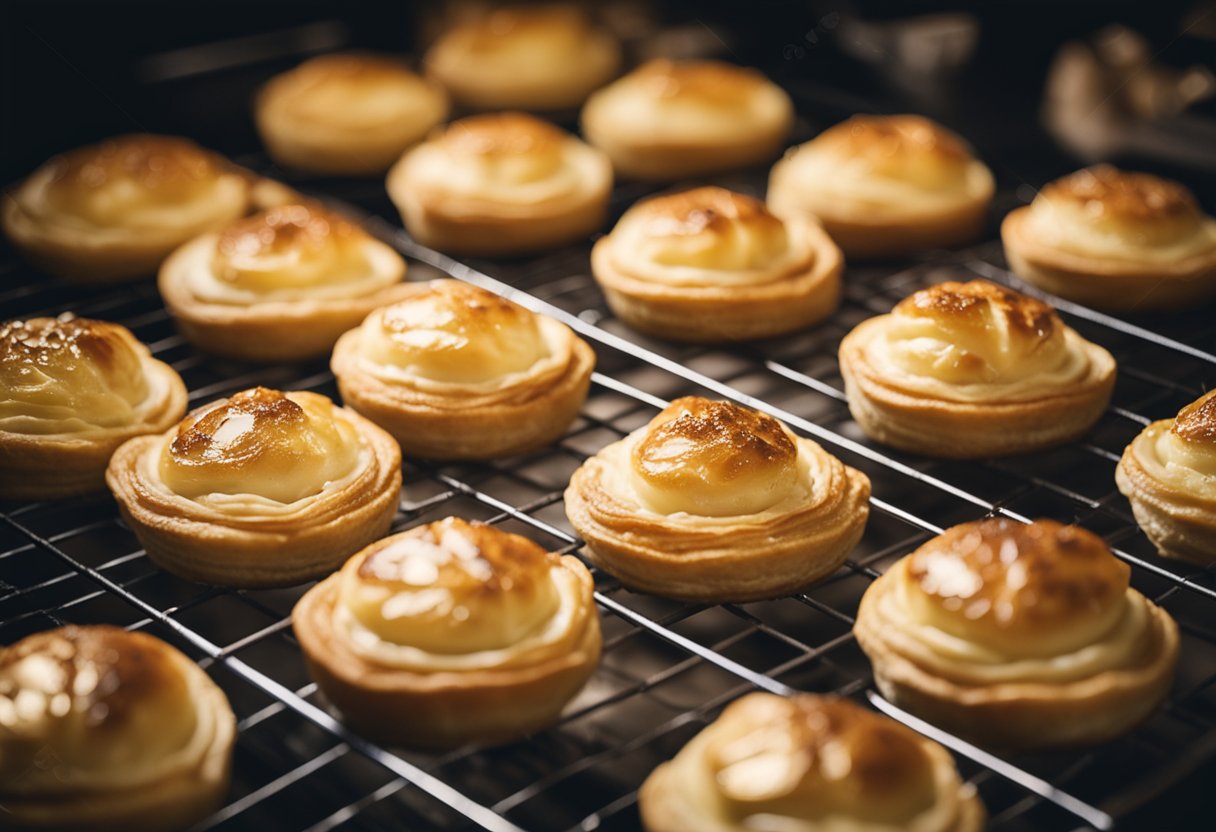
Before we dive into the specifics of reheating puff pastry, it’s important to understand how to prepare it for reheating. Proper preparation is key to ensuring that your puff pastry comes out perfectly every time.
Depending on the type of puff pastry you’re working with, you may need to thaw it first, or you may be able to reheat it straight from the fridge or freezer. In the next section, I’ll go over the steps you need to take to prepare your puff pastry for reheating.
Key Takeaways
- Proper preparation is key to reheating puff pastry
- The best reheating technique depends on the type of puff pastry you’re working with
- Serve puff pastry immediately after reheating for optimal texture and flavor
Preparing Puff Pastry for Reheating
Before reheating puff pastry, it is important to prepare it properly. Improper preparation can lead to uneven heating and soggy pastry.
Here are the steps I recommend for preparing puff pastry for reheating:
Thawing Frozen Puff Pastry
If you have frozen puff pastry, it is important to thaw it properly before reheating. Improper thawing can lead to uneven heating and a soggy pastry.
Here is how I recommend thawing frozen puff pastry:
- Remove the puff pastry from the freezer and place it in the fridge overnight. This will allow the pastry to thaw slowly and evenly.
- If you are in a hurry, you can also thaw the pastry at room temperature. Simply remove the pastry from the freezer and let it sit at room temperature for 30-60 minutes, or until it is no longer frozen.
- Once the pastry is thawed, remove it from the plastic wrap and use it as desired.
Bringing Puff Pastry to Room Temperature
If you have refrigerated puff pastry, it is important to bring it to room temperature before reheating. Cold pastry will not heat evenly and may become soggy.
Here is how I recommend bringing puff pastry to room temperature:
- Remove the puff pastry from the fridge and let it sit at room temperature for 20-30 minutes, or until it is no longer cold to the touch.
- If you are in a hurry, you can also warm the pastry slightly in the microwave. Simply place the pastry on a microwave-safe plate and heat it on low power for 10-15 seconds, or until it is no longer cold to the touch.
- Once the pastry is at room temperature, it is ready to be reheated.
Reheating Techniques
When it comes to reheating puff pastry, there are several techniques you can use to ensure that your pastry is warm, flaky, and delicious.
Here are some of the most effective methods:
Oven Reheating Method
The oven is the most popular method for reheating puff pastry. Preheat your conventional oven to the temperature specified on the packaging or recipe. This ensures that the heat is distributed evenly throughout the pastry.
Place your pastry on a baking sheet lined with parchment paper and heat it for 10-15 minutes until it is heated through. If you want to retain the crispiness of your puff pastry while reheating, use a higher temperature (around 400°F) for 5-8 minutes.
Microwave Reheating Tips
If you are short on time, the microwave can be a quick and easy way to reheat your puff pastry. However, it is important to note that this method may result in soggy pastry.
To prevent this, wrap your pastry in a damp paper towel and place it in the microwave for 10-15 seconds. Check the pastry and repeat the process until it is heated through.
Using a Toaster Oven
A toaster oven is a great alternative to a conventional oven when reheating small portions of puff pastry. Preheat your toaster oven to the temperature specified on the packaging or recipe.
Place your pastry on a baking sheet lined with parchment paper and heat it for 10-15 minutes until it is heated through. If you want to retain the crispiness of your puff pastry while reheating, use a higher temperature (around 400°F) for 5-8 minutes.
Skillet Reheating for Crispiness
Searing your puff pastry in a skillet is a great way to achieve a crispy, golden-brown exterior while keeping the interior warm and moist.
Heat a skillet over high heat and add butter to melt. Place your pastry in the skillet and cook each side until golden brown. This method is best for small portions of puff pastry and may not work well for larger items.
Overall, choosing the right reheating method depends on the type of pastry you have and your personal preferences. By following these tips, you can ensure that your puff pastry is reheated to perfection every time.
Ensuring Optimal Texture and Flavor
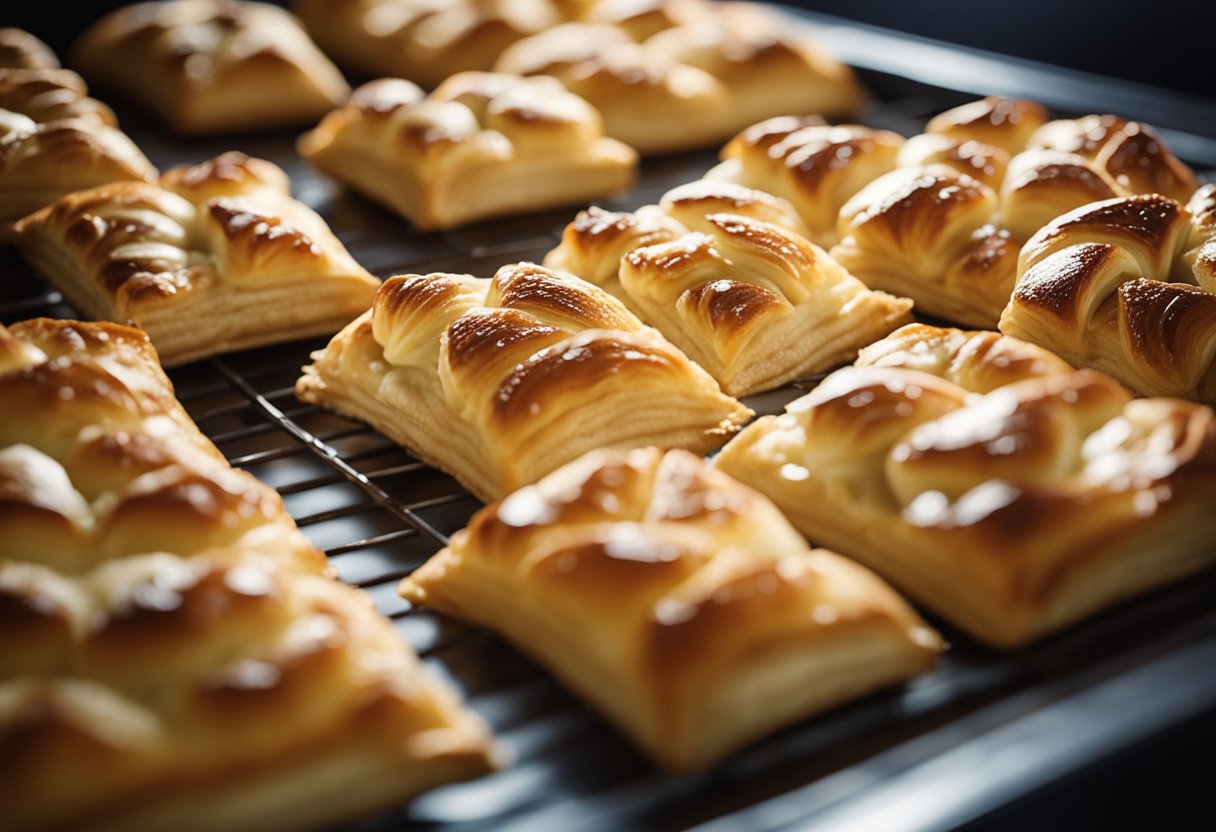
When reheating puff pastry, it’s important to take steps to ensure that the texture and flavor are preserved.
Here are some tips to help you achieve the best results.
Avoiding Sogginess and Preserving Crispiness
One of the biggest challenges when reheating puff pastry is avoiding sogginess. To prevent this, it’s important to make sure that the pastry is reheated evenly and thoroughly.
Preheat your oven to the recommended temperature, and place the pastry on a baking sheet or cast iron pan.
To preserve the crispiness of the pastry, avoid wrapping it in foil or plastic wrap. Instead, leave it uncovered, so that any excess moisture can escape. You can also brush the pastry with egg wash before reheating it, which will help it brown and become crispy.
Enhancing Flavor Post-Reheating
To enhance the flavor of your reheated puff pastry, consider adding some herbs or spices. You can sprinkle powdered sugar or salt over the pastry before reheating it, or add some fresh herbs like thyme or rosemary.
This will not only add flavor, but also help to mask any stale or reheated taste.
Another option is to add a small amount of butter to the pastry after reheating it. The butter will melt and coat the pastry, adding richness and flavor. You can also add a sprinkle of powdered sugar or cinnamon to the butter for a sweet and savory twist.
By following these tips, you can ensure that your reheated puff pastry retains its texture and flavor, and is just as delicious as it was when it was freshly baked.
Handling Specific Puff Pastry Items
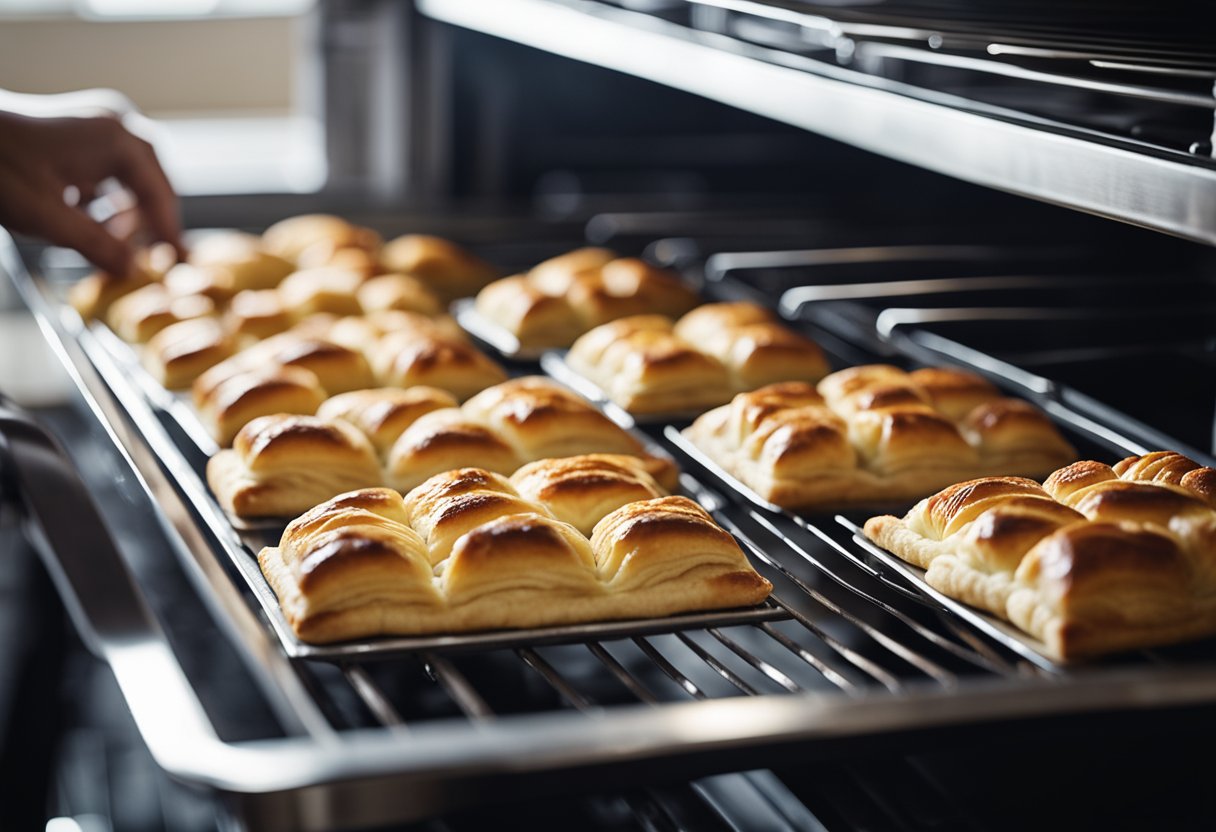
When it comes to reheating puff pastry, different items require slightly different approaches. In this section, I will cover the best practices for reheating filled pastries and turnovers, as well as tarts and danishes.
Reheating Filled Pastries and Turnovers
Filled pastries and turnovers can be a bit tricky to reheat because you want to make sure the filling is heated through without overcooking the pastry.
Here’s what I recommend:
- Preheat your oven to the temperature specified on the packaging or recipe.
- Place the pastries or turnovers on a baking sheet lined with parchment paper.
- If the pastries or turnovers have grated cheese on top, cover them lightly with foil to prevent the cheese from burning.
- Bake for 10-15 minutes, or until the pastry is golden brown and the filling is heated through.
- Let the pastries or turnovers cool for a few minutes before serving.
Best Practices for Tarts and Danishes
Tarts and danishes are a bit easier to reheat than filled pastries and turnovers, but there are still a few things to keep in mind:
- Preheat your oven to the temperature specified on the packaging or recipe.
- Place the tarts or danishes on a baking sheet lined with parchment paper.
- If the tarts or danishes have a filling that can spill out, such as fruit, make sure to seal the edges of the pastry to prevent the filling from leaking out.
- Bake for 10-15 minutes, or until the pastry is golden brown and the filling is heated through.
- Let the tarts or danishes cool for a few minutes before serving.
By following these best practices, you can ensure that your puff pastry items are reheated evenly and come out flaky and delicious.
Serving and Storage Suggestions
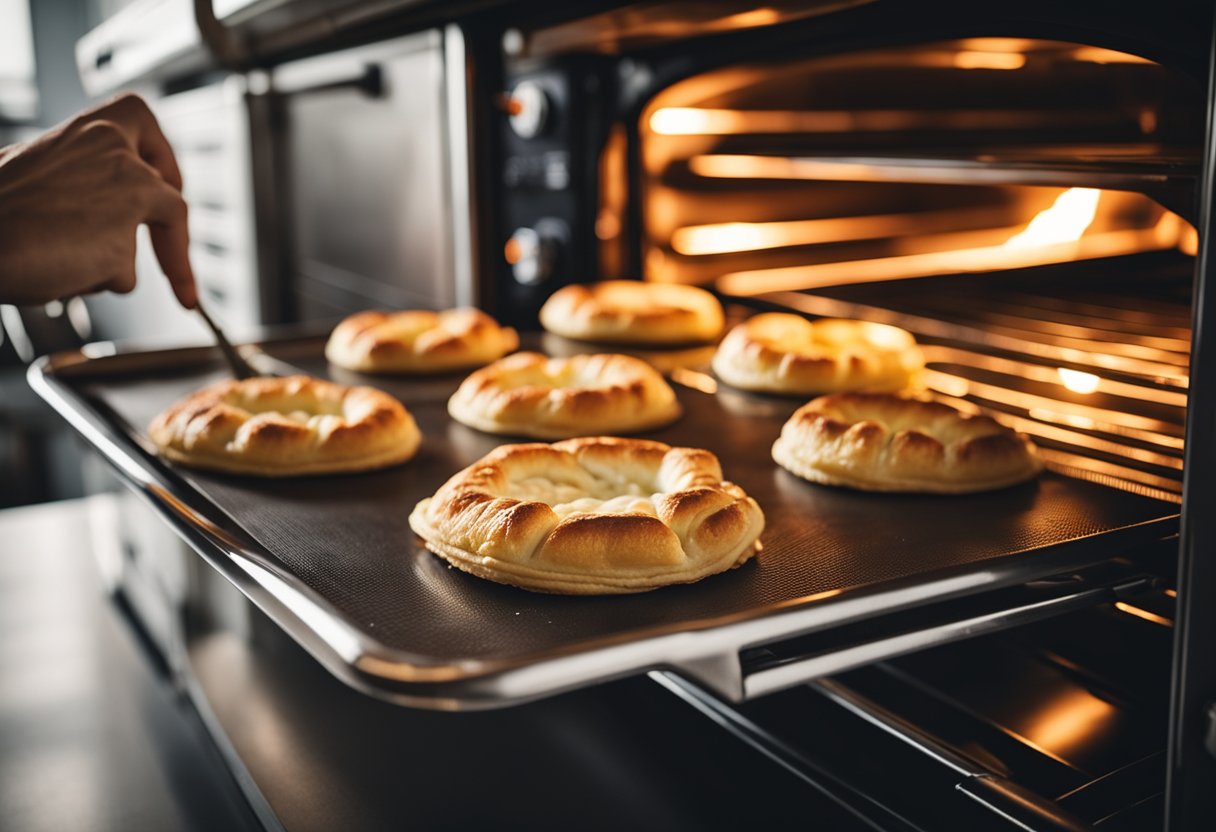
As with any food, proper storage and serving are key to enjoying puff pastry. Here are some tips to ensure your leftover puff pastry stays fresh and tasty.
Proper Storage for Leftover Puff Pastry
If you have leftover puff pastry, it’s important to store it properly to ensure it stays fresh. The best way to store leftover puff pastry is in an airtight container in the refrigerator.
You can also wrap it in aluminum foil or place it on a baking sheet lined with parchment paper. This will help prevent it from drying out and losing its flakiness.
Serving Suggestions for Reheated Puff Pastry
Reheated puff pastry can be just as delicious as freshly baked puff pastry. Here are some serving suggestions to help you enjoy your reheated puff pastry:
- Serve with whipped cream: Reheated puff pastry goes great with a dollop of whipped cream. This can help balance out the richness of the pastry and add a touch of sweetness.
- Serve with fresh fruit: Puff pastry pairs well with fresh fruit, such as strawberries or raspberries. This can add a burst of flavor and freshness to the pastry.
- Serve as a side dish: Puff pastry can also be served as a side dish, alongside a main course. This can be a great way to add some variety to your meal and impress your guests.
By following these tips, you can ensure your leftover puff pastry stays fresh and tasty and your reheated puff pastry is just as delicious as the first time around.
Frequently Asked Questions
What is the best temperature to reheat puff pastry in the oven?
The best temperature to reheat puff pastry in the oven is between 350°F (175°C) and 400°F (200°C) [1]. The exact temperature will depend on the type of puff pastry and whether it has meat in it or not.
If the puff pastry has meat in it, it’s recommended to reheat at a higher temperature of 400°F (200°C). If it doesn’t have meat, then 350°F (175°C) will suffice.
Can you reheat puff pastry in the microwave without it getting soggy?
While it is possible to reheat puff pastry in the microwave, it’s not recommended as it can make the pastry soggy and ruin its texture [2]. If you must use the microwave, it’s best to reheat it for short intervals of 10-15 seconds at a time until it’s warm enough.
What are the steps to reheat a puff pastry pie to maintain its crispiness?
The best way to reheat a puff pastry pie and maintain its crispiness is to use an oven [3]. Here are the steps:
- Preheat your oven to 350°F (175°C).
- Carefully slice the cold puff pastry pie into equal portions using a sharp knife.
- Place the slices on a baking sheet lined with parchment paper.
- Bake for 10-15 minutes or until the pastry is heated through and crispy.
Is it possible to reheat puff pastry in an air fryer effectively?
Yes, it is possible to reheat puff pastry in an air fryer effectively, but it’s important to keep an eye on it as it can cook quickly and burn easily [1].
Preheat the air fryer to 350°F (175°C) and place the puff pastry in the basket. Cook for 2-3 minutes or until it’s heated through and crispy.
How can you refresh puff pastry that has become dry?
If puff pastry has become dry, you can refresh it by brushing it with a little bit of water and heating it in the oven for a few minutes [2]. Alternatively, you can wrap the pastry in a damp paper towel and heat it in the microwave for 10-15 seconds.
What’s the proper way to store puff pastry after baking to ensure freshness when reheating?
To ensure freshness when reheating puff pastry, it’s important to store it properly after baking. The best way to store puff pastry is to wrap it tightly in plastic wrap or aluminum foil and place it in an airtight container in the fridge for up to 2 days [3].
If you want to keep it longer, you can freeze it for up to 2 months. To reheat, simply thaw it in the fridge overnight and follow the instructions for reheating.



